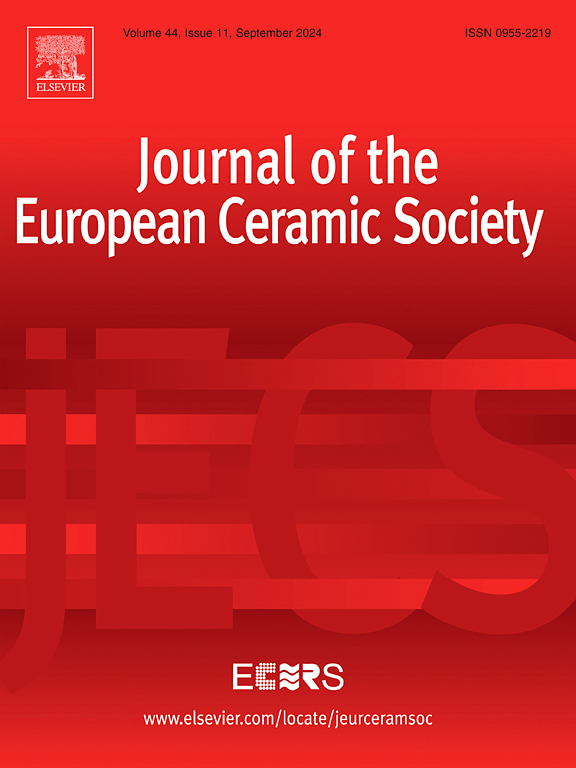Lead-free (Na1–1.5xBixLa0.5x)(Nb1-xMgx)O3 ceramics with high energy storage performance via ionic co-doping induced local antiferroelectric phases coexistence
IF 5.8
2区 材料科学
Q1 MATERIALS SCIENCE, CERAMICS
Journal of The European Ceramic Society
Pub Date : 2025-04-15
DOI:10.1016/j.jeurceramsoc.2025.117460
引用次数: 0
Abstract
Antiferroelectric materials have garnered considerable interest for pulsed power applications because of their reversible antiferroelectric-ferroelectric (AFE-FE) phase transition under an electric field. However, pure NaNbO3 exhibits ferroelectric phase characteristics at room temperature under an electric field, resulting in low energy storage performance. We prepared lead-free (Na1–1.5xBixLa0.5x)(Nb1-xMgx)O3 ceramics via inducing local antiferroelectric phases coexistence by ion co-doping. The P-R phase transition temperature was shifted below room temperature, which promotes the formation of polar nanoregions and achieves a favorable ΔP value (52 μC·cm−2) when x = 0.06. Consequently, the sample with x = 0.06 achieved a high energy storage density (8.24 J·cm−3), energy storage efficiency (93.7 %), and energy storage potential (23.54 J·cm−2·MV−1) at 350 kV·cm−1, while exhibiting excellent frequency (1–1000 Hz) and temperature (25–150 °C) stability. This work presents a practical approach to develop capacitors with high energy storage performance for other systems under the same electric field range.
求助全文
约1分钟内获得全文
求助全文
来源期刊

Journal of The European Ceramic Society
工程技术-材料科学:硅酸盐
CiteScore
10.70
自引率
12.30%
发文量
863
审稿时长
35 days
期刊介绍:
The Journal of the European Ceramic Society publishes the results of original research and reviews relating to ceramic materials. Papers of either an experimental or theoretical character will be welcomed on a fully international basis. The emphasis is on novel generic science concerning the relationships between processing, microstructure and properties of polycrystalline ceramics consolidated at high temperature. Papers may relate to any of the conventional categories of ceramic: structural, functional, traditional or composite. The central objective is to sustain a high standard of research quality by means of appropriate reviewing procedures.
 求助内容:
求助内容: 应助结果提醒方式:
应助结果提醒方式:


